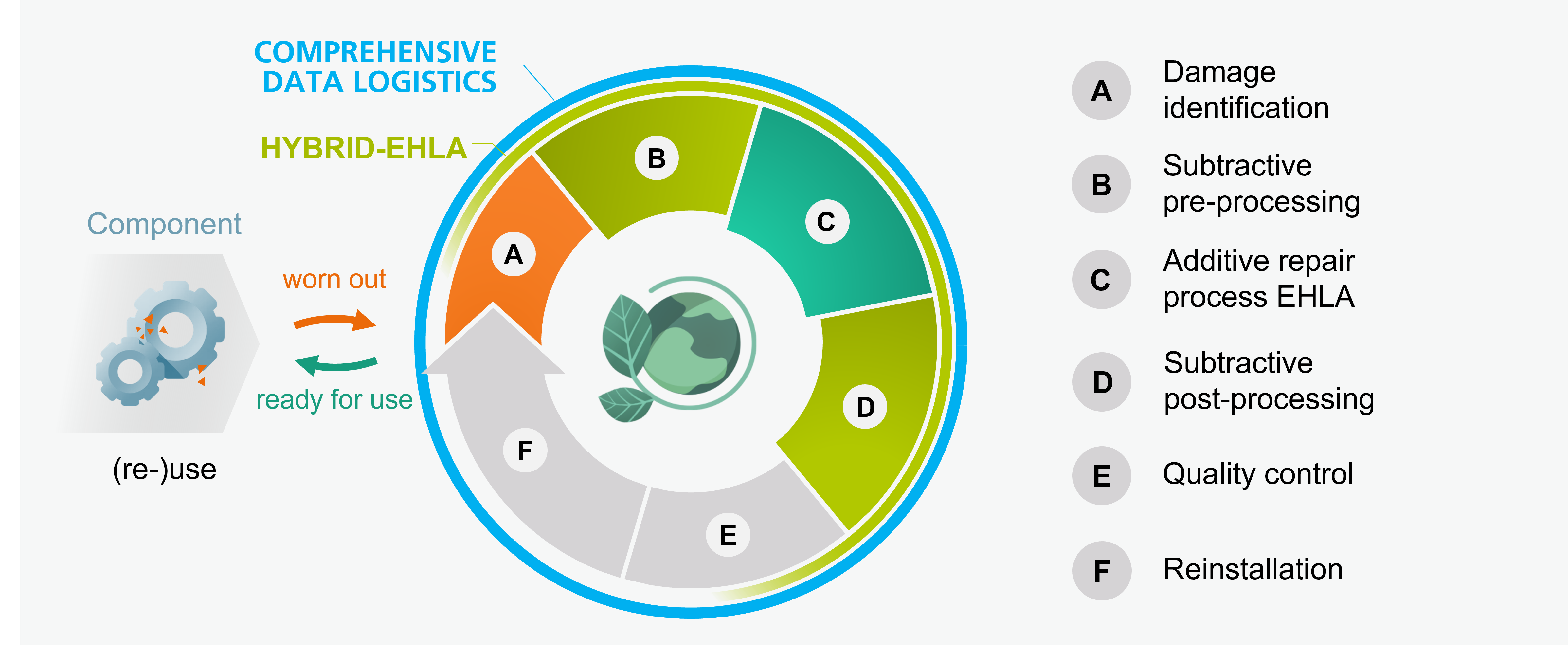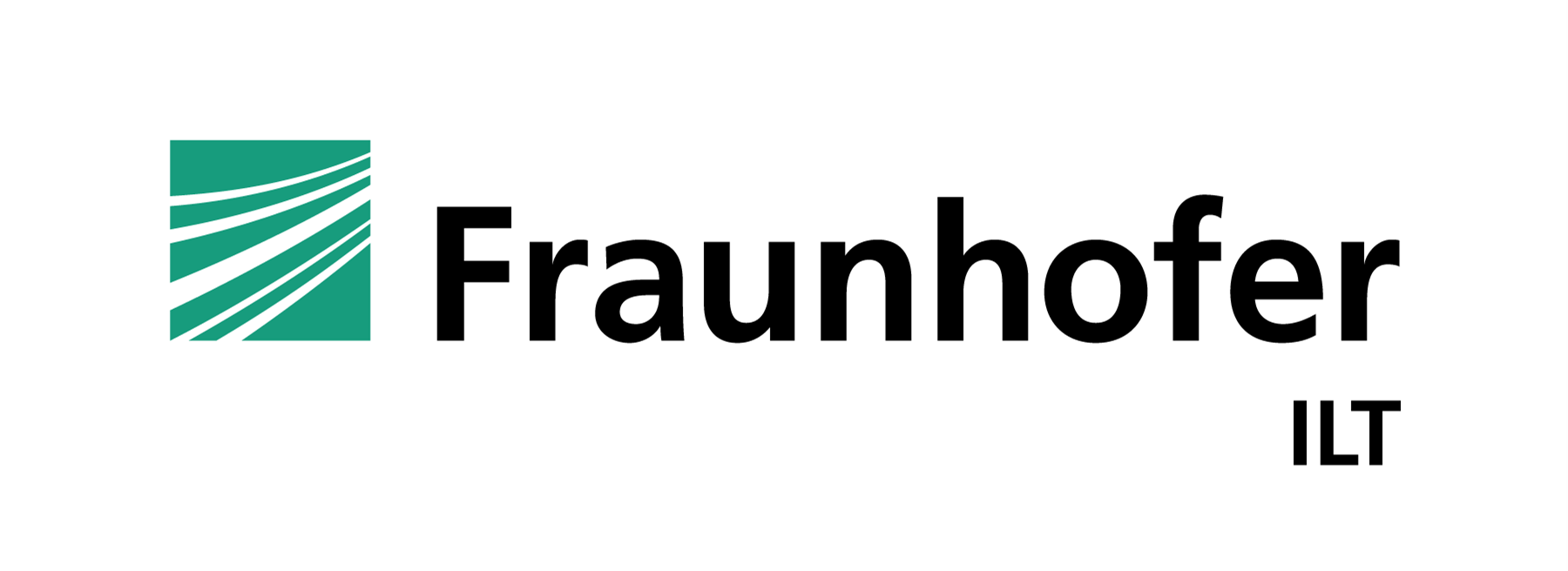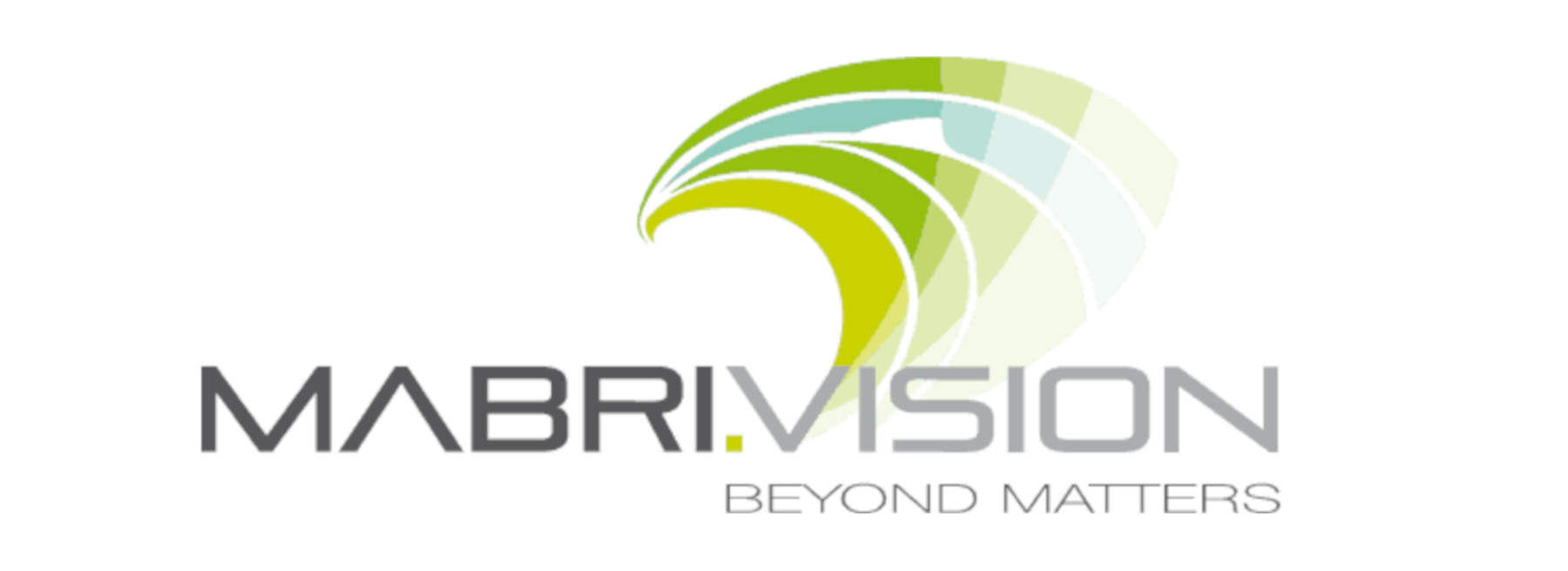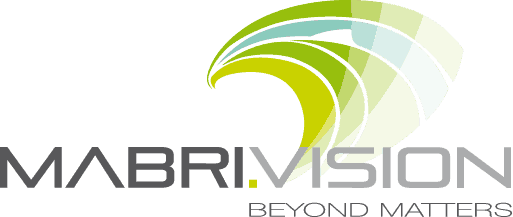
Collaborative Project »PRECIRC«

PRECIRC - Laser-based Repair Process Chain to Increase Resource Efficiency in the Circular Economy of Metal Precision Components
Components subject to severe wear and corrosion often fail due to localized surface damage. The replacement of failed components is resource-intensive and the recycling of metallic components requires energy-intensive melting processes. In addition, the increasing demand for increasingly scarce raw materials leads to economic dependence on importing countries and causes a significant environmental footprint due to the CO₂ emissions generated in the manufacturing process. Laser-based repair of such components represents a sustainable and resource-saving solution approach, but there is currently a lack of a suitable process chain that meets both the high requirements for repair quality and easy accessibility for SMEs.
In the PRECIRC research project (KMU-innovativ, funding code 033RK108B), a fully automated laser-based process chain for the sustainable repair of metallic precision components is being developed. By combining EHLA technology with subtractive pre- and post-processing, SMEs will be enabled to perform qualified repairs on large-volume precision components, such as cylinders and rollers, in an automated manner. Worn components that were previously melted down and remanufactured in a resource- and energy-intensive process can be repaired by PRECIRC and transferred to a much more efficient circular economy. PRECIRC thus increases the raw material product
Structure of the repair process chain
At the heart of the process chain is a sequence of subtractive and additive manufacturing process steps. First, local material is removed in the form of a defined groove geometry at the damaged area of the defective component. Then, the volume in the pre-machined area is filled additively using EHLA. Subsequent machining restores the original contour of the repaired component.
Repair applications unleash the full potential of EHLA
In the field of surface coatings, the EHLA process is already industrially established. EHLA is characterized by a number of advantageous properties, making the process particularly suitable for repairing heat-sensitive components:
- Wide variety of materials
- Small mixing and heat-affected zone even when processing heat-sensitive components (e.g. made of heat-treatable steels)
- Coating thicknesses between 20 µm and 500 µm
- Melt-metallurgical bond between coating material and base material
- Powder efficiency > 90 %
Automation of the process chain
The automation of the process chain is achieved by using different sensors in combination with user-friendly software, which allows the user to intuitively handle the repair process. Optical sensors are used to characterize the component surface before, during and after repair. Spatially resolved image data and height profiles are used for automatic defect detection as well as for adaptive path planning of subtractive and additive process steps.

Overall objective
The overall objective of the PRECIRC project is to develop an automated laser-based process chain for the sustainable repair of metallic precision components. The process chain centers on a sequence of subtractive and additive manufacturing process steps (figure). First, a local material removal in the form of a defined groove geometry takes place at the damage site of the component to be repaired. This groove is then additively filled with a metallic filler material using extreme high-speed laser cladding (EHLA). Subsequent subtractive machining brings the repaired component to its final contour.
The research project started in August 2023 and has a duration of 3 years.
The Cooperation Partners

Fraunhofer ILT
The Fraunhofer Institute for Laser Technology ILT has been carrying out laser material processing projects for over 35 years. Since its foundation in 1985, laser cladding has been developed for various applications (repair, corrosion/wear protection, additive manufacturing).

Richter paper-technologies & paper-services
Since 1971 Richter paper-technologies & paper-services has specialised in mechanical engineering for the production of wear parts, as well as their repair and regeneration. In addition to mechanical processing, the manufacturing options include welding and thermal spraying.

LUNOVU GmbH
LUNOVU GmbH has been building complex laser systems since 2013 and offers integrated solutions for production or development tasks, especially in the field of additive manufacturing and coating. The machines are composed of high-performance hardware, specially developed control software and application-specific laser process knowledge.

MABRI.VISION GmbH
Since 2015, MABRI.VISION GmbH has been developing optical sensor technology and integrating it into inline inspection systems for the detection of defects, among other things. It has the know-how in data acquisition and evaluation.

Center Connected Industry
The Center Connected Industry as an organisational unit of EICe Aachen GmbH has been developing innovative solutions and information systems since 2016. A special focus is on collaborative innovation projects with international industry partners.
 Fraunhofer Institute for Laser Technology ILT
Fraunhofer Institute for Laser Technology ILT


